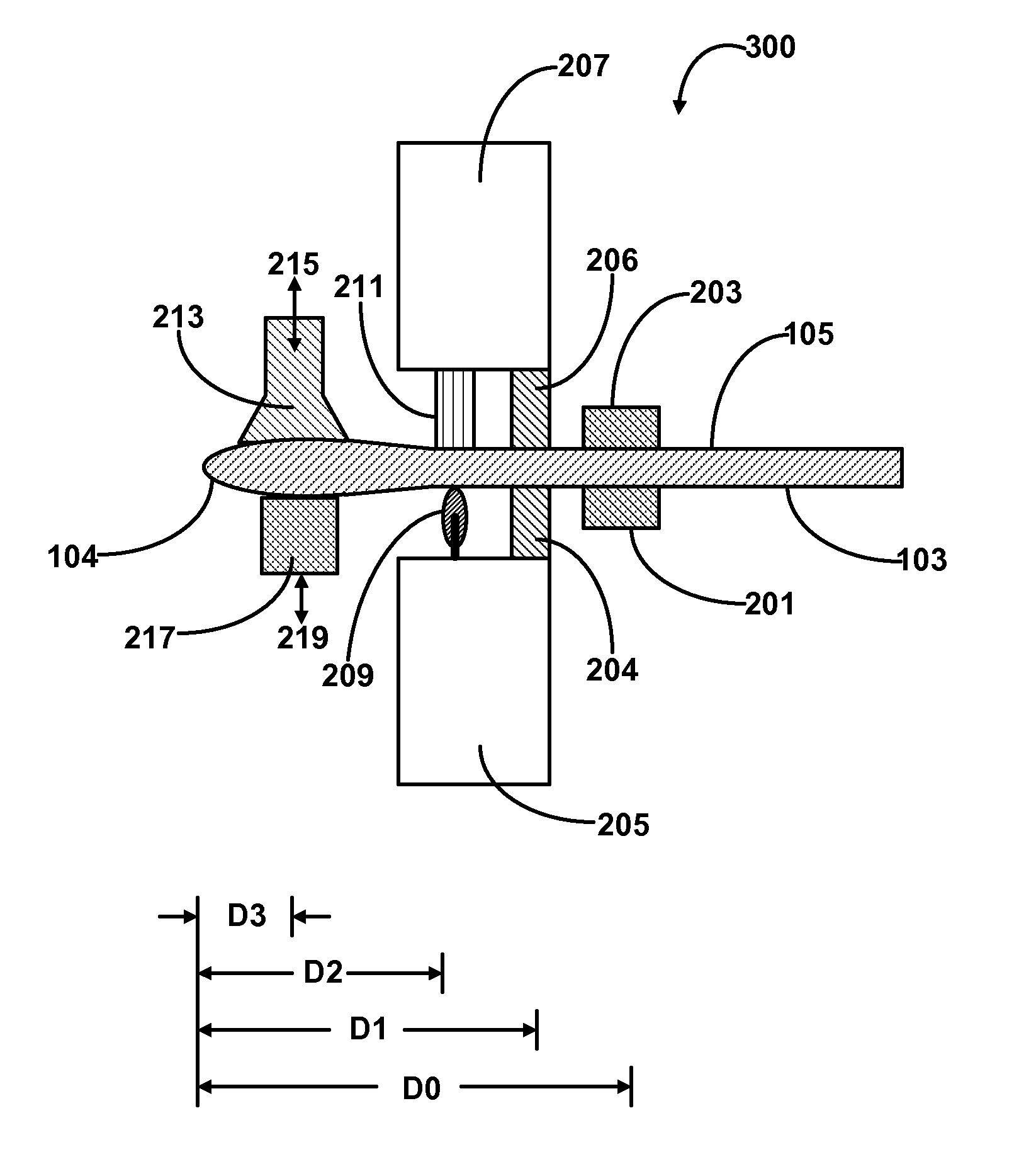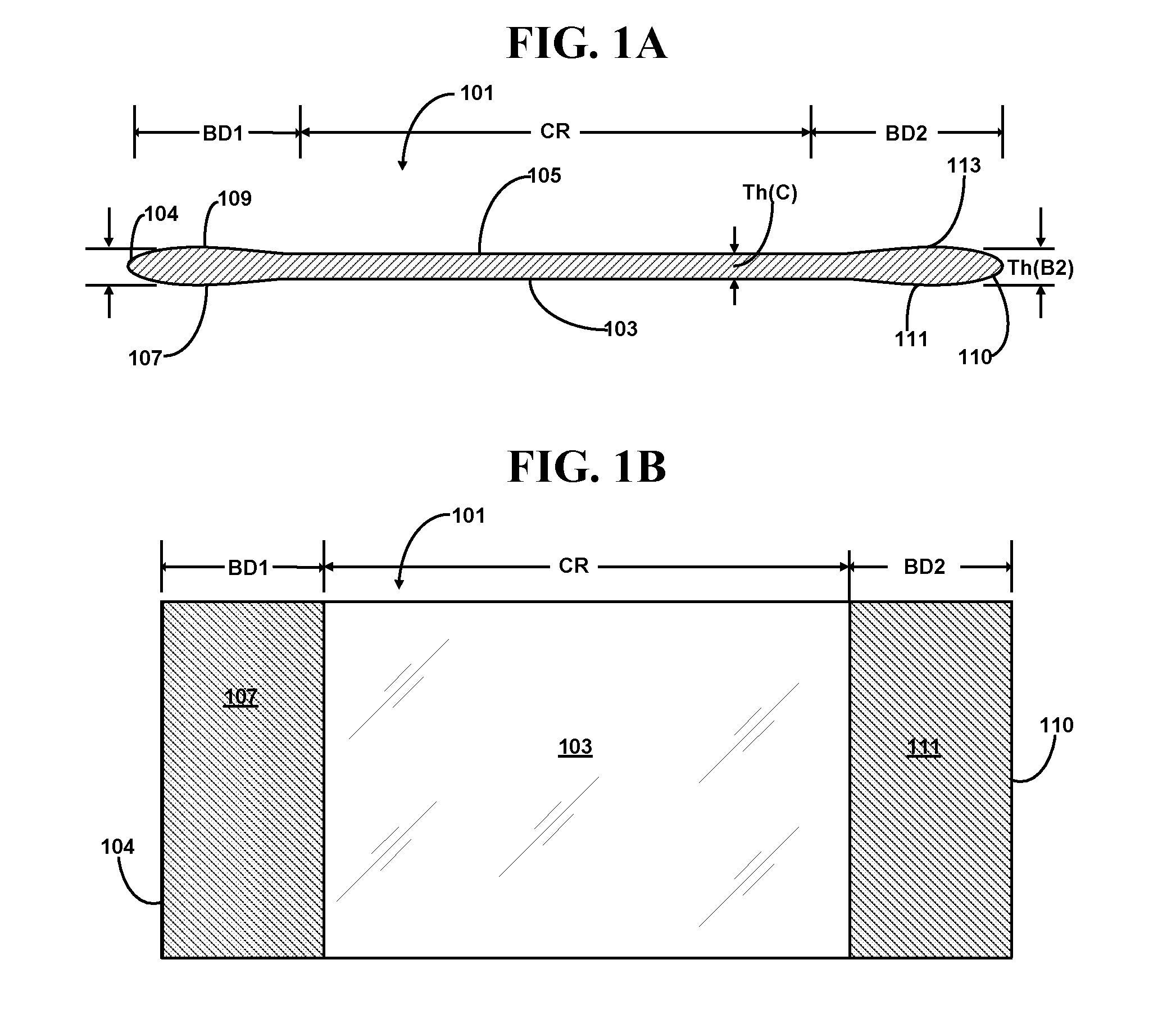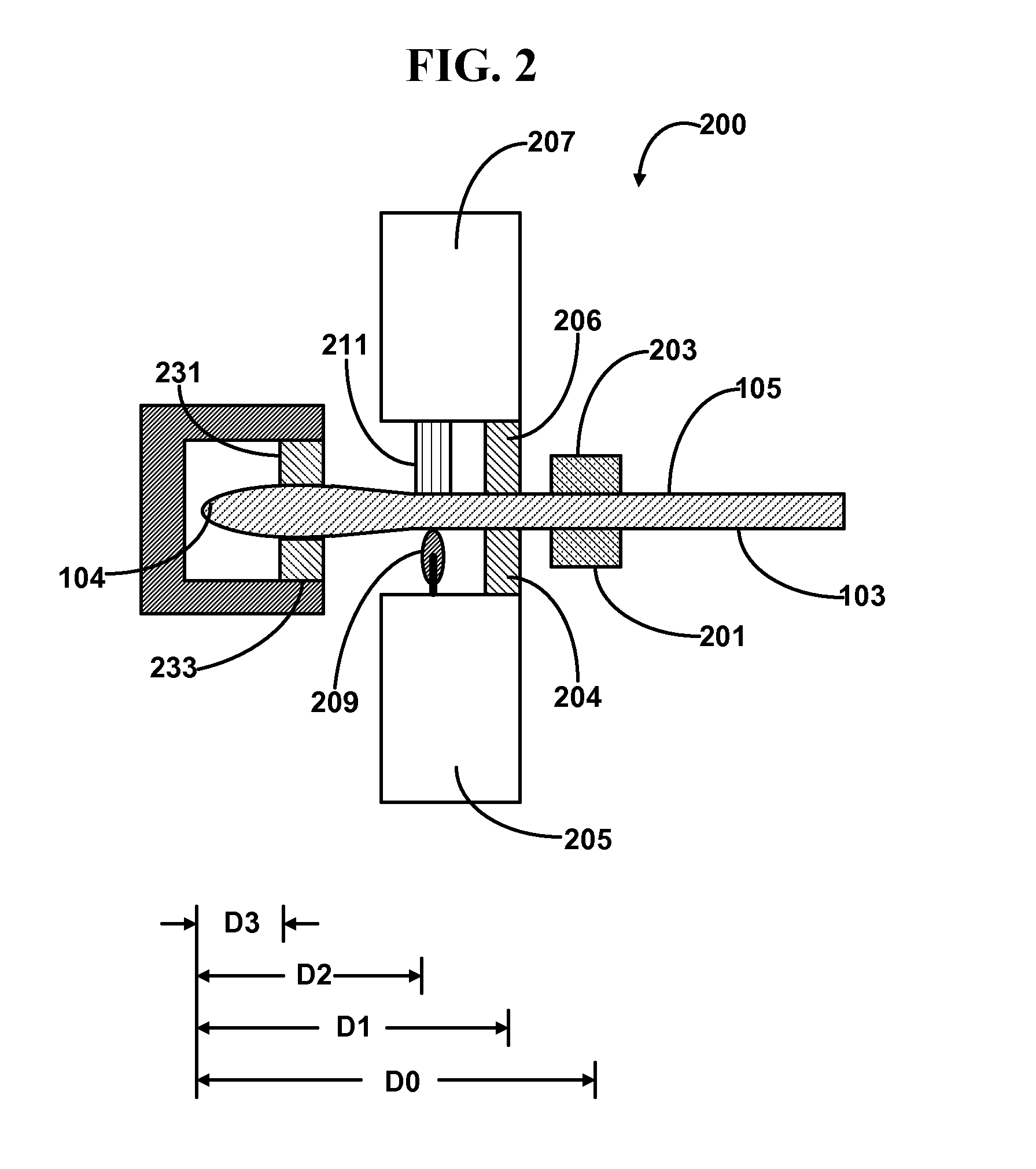Method and apparatus for removing peripheral portion of a glass sheet
- Summary
- Abstract
- Description
- Claims
- Application Information
AI Technical Summary
Benefits of technology
Problems solved by technology
Method used
Image
Examples
example 1 (
Inventive)
[0096]FIG. 2 schematically illustrates a cross-sectional view of one end of a glass sheet bead removing apparatus 200 in operation according to certain embodiments of the first and second aspects of the present disclosure. The other end, substantially symmetrical to the end illustrated, is not shown. The glass sheet shown in FIGS. 1A and 1B is being secured by the two clamping arms 201, 203 of a clamp affixed to a suspension device (not shown) such as a vertical glass sheet suspension conveyor. Normally, the glass sheet is first engaged with the clamping arms 201 and 203 outside of the peripheral portion removing apparatus 200, and then moved into the apparatus 200 by the conveyor. Inside the peripheral portion removing apparatus 200, a first side edge restraining tower 205 comprising a first side edge restraining clamp strip 204 is located on the side of the first major surface 103 of the glass sheet, and a second side edge retraining tower 207 comprising a second side ed...
PUM
| Property | Measurement | Unit |
|---|---|---|
| Time | aaaaa | aaaaa |
| Thickness | aaaaa | aaaaa |
| Pressure | aaaaa | aaaaa |
Abstract
Description
Claims
Application Information
 Login to View More
Login to View More - Generate Ideas
- Intellectual Property
- Life Sciences
- Materials
- Tech Scout
- Unparalleled Data Quality
- Higher Quality Content
- 60% Fewer Hallucinations
Browse by: Latest US Patents, China's latest patents, Technical Efficacy Thesaurus, Application Domain, Technology Topic, Popular Technical Reports.
© 2025 PatSnap. All rights reserved.Legal|Privacy policy|Modern Slavery Act Transparency Statement|Sitemap|About US| Contact US: help@patsnap.com



